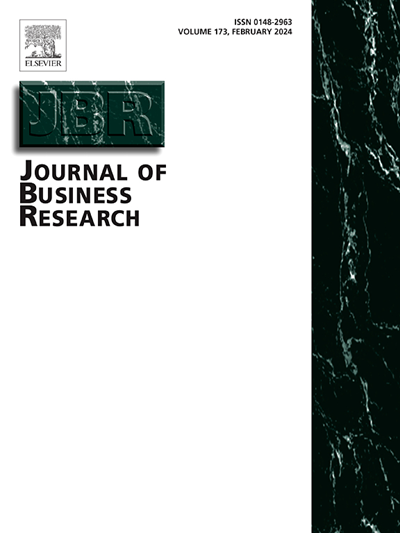Omnichannel safe customer experience: how should it be measured? Does it affect customer well-being and retailers’ performance?
IF 9.8
1区 管理学
Q1 BUSINESS
引用次数: 0
Abstract
Customer safety is a fundamental need, so for customer-centric omnichannel retailers operating in competitive and technologically intensive markets, a critical question arises: do customers’ perceptions of a safe customer experience determine their sense of well-being, as well as the retailers’ performance? To offer insights into these questions, the current research relies on mixed methods across five studies in six phases to develop a multidimensional scale for safe customer experiences (SafeCX). The formative SafeCX scale, which can be adopted as either a full 48-item or a condensed 12-item version, contains 12 critical safety dimensions that constitute essential considerations for managers, as well as key concepts for researchers dedicated to customer safety considerations. Among these dimensions, several directly capture in-store technologies, such as payment systems, surveillance cameras, and technology-mediated order fulfillment processes. Other dimensions reflect online technologies, such as data protection, social media safety, and practices that bridge physical and digital channels, offering a comprehensive perspective on customer safety. Complementing SafeCX, we also develop a two-dimensional, 8-item customer well-being scale: individual well-being, reflecting effects on one’s own mental, emotional, social, and physical life; and community well-being, reflecting effects on family, friends, and the broader community. This scale enables researchers and retail managers to assess how safety perceptions translate into personal and societal value in omnichannel contexts. In turn, this research establishes that customers who indicate positive appraisals on the SafeCX scale also exhibit a higher share of wallet and stronger intentions to influence others, effects that are mediated by their well-being appraisal.

全渠道安全客户体验:如何衡量?它会影响顾客的幸福感和零售商的业绩吗?
客户安全是一项基本需求,因此,对于在竞争激烈和技术密集型市场中运营的以客户为中心的全渠道零售商来说,一个关键问题出现了:客户对安全客户体验的看法是否决定了他们的幸福感,以及零售商的业绩?为了深入了解这些问题,目前的研究依赖于五项研究的混合方法,分六个阶段开发安全客户体验的多维尺度(SafeCX)。形成性SafeCX量表,可以采用完整的48项或浓缩的12项版本,包含12个关键的安全维度,这些维度构成了管理人员的基本考虑因素,以及致力于客户安全考虑的研究人员的关键概念。在这些维度中,有几个直接捕获了店内技术,如支付系统、监控摄像头和技术介导的订单履行流程。其他维度反映了在线技术,如数据保护、社交媒体安全以及跨越实体和数字渠道的实践,提供了对客户安全的全面视角。作为SafeCX的补充,我们还开发了一个二维的、包含8个项目的客户幸福感量表:个人幸福感,反映对个人心理、情感、社交和身体生活的影响;以及社区福祉,反映对家庭、朋友和更广泛的社区的影响。该量表使研究人员和零售经理能够评估安全观念如何在全渠道环境中转化为个人和社会价值。反过来,本研究确立了在SafeCX量表上表示积极评价的客户也表现出更高的钱包份额和更强的影响他人的意图,这些影响是由他们的幸福感评估介导的。
本文章由计算机程序翻译,如有差异,请以英文原文为准。
求助全文
约1分钟内获得全文
求助全文
来源期刊

Journal of Business Research
BUSINESS-
CiteScore
20.30
自引率
10.60%
发文量
956
期刊介绍:
The Journal of Business Research aims to publish research that is rigorous, relevant, and potentially impactful. It examines a wide variety of business decision contexts, processes, and activities, developing insights that are meaningful for theory, practice, and/or society at large. The research is intended to generate meaningful debates in academia and practice, that are thought provoking and have the potential to make a difference to conceptual thinking and/or practice. The Journal is published for a broad range of stakeholders, including scholars, researchers, executives, and policy makers. It aids the application of its research to practical situations and theoretical findings to the reality of the business world as well as to society. The Journal is abstracted and indexed in several databases, including Social Sciences Citation Index, ANBAR, Current Contents, Management Contents, Management Literature in Brief, PsycINFO, Information Service, RePEc, Academic Journal Guide, ABI/Inform, INSPEC, etc.
 求助内容:
求助内容: 应助结果提醒方式:
应助结果提醒方式:


